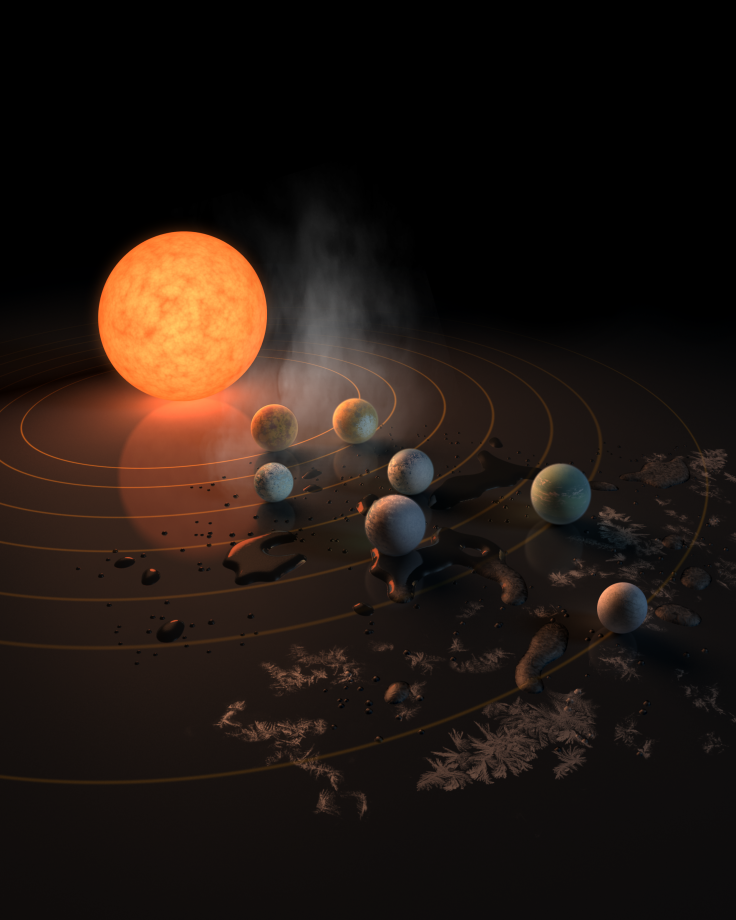TRAPPIST-1: NASA's Kepler Telescope Provides Another Look At Seven-Planet Star System

The TRAPPIST-1 system is the first known star system containing seven Earth-sized planets, three of which reside in habitable zone of the red dwarf — a region that has just the right temperature for liquid water to exist on the surface. The discovery of the seven planets around the red dwarf — announced last month — was made using the Transiting Planets and Planetesimals Small Telescope (TRAPPIST) and the Very Large Telescope (VLT) in Chile and NASA’s Spitzer Space Telescope.
On Wednesday, NASA released additional data about the star system collected by the agency’s planet-hunting Kepler Space Telescope. The observations, carried out as part of the K2 mission between Dec. 15 and March 4, could allow astronomers to refine the previous measurements of the first six planets and pin down the orbital period and mass of the seventh.
“Scientists and enthusiasts around the world are invested in learning everything they can about these Earth-size worlds,” Geert Barentsen, K2 research scientist at NASA's Ames Research Center at Moffett Field, California, said in a statement. “Providing the K2 raw data as quickly as possible was a priority to give investigators an early look so they could best define their follow-up research plans. We're thrilled that this will also allow the public to witness the process of discovery.”
The Kepler Space Telescope, launched in 2009, has so far detected nearly 3,500 confirmed exoplanets and 578 multi-planet systems. In order to detect planets orbiting distant stars, the spacecraft looks for minuscule changes in the stars' brightness due to transiting planets.
The TRAPPIST-1 star system was studied as part of the K2 mission’s Campaign 12, which involved monitoring the system for 74 days.
“This is the longest, nearly continuous set of observations of TRAPPIST-1 yet, and provides researchers with an opportunity to further study the gravitational interaction between the seven planets, and search for planets that may remain undiscovered in the system,” NASA said in the statement. “The added refinements to the previous measurements of the known planets and any additional planets that may be discovered in the K2 data will help astronomers plan for follow-up studies of the neighboring TRAPPIST-1 worlds using NASA's upcoming James Webb Space Telescope.”
The James Webb Telescope, to be launched next year, will be equipped with a spectrograph, which would study the atmospheres of alien planets in unprecedented detail. This, in turn, would help scientists determine whether these exoplanets — including the seven in the TRAPPIST-1 system — can sustain life as we know it.
© Copyright IBTimes 2024. All rights reserved.






















